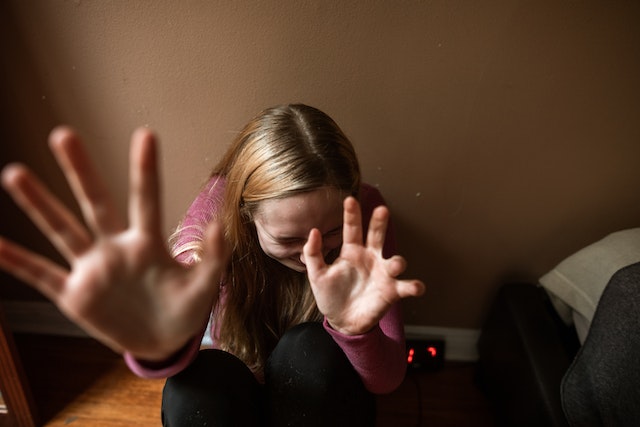
In the intricate realm of human emotions, where elation, desolation, and every sentiment in between entwine, the phenomenon of emotional trauma casts an enduring and profound shadow.
This article delves profoundly into the intricate interplay between emotional trauma and the human brain, illuminating the multifaceted mechanisms through which trauma can mold our cognitive terrain and wield influence over our holistic well-being.
By unraveling the intricate web of connections and embarking on an exploration of the profound depths of this subject, we achieve an enriched comprehension of the potent repercussions that emotional trauma can wield over the course of our existence.
Unraveling Emotional Trauma
Emotional trauma, an affliction born from harrowing experiences, has the capacity to encompass a vast spectrum of occurrences, ranging from accidents and bereavement to abuse and discord.
These traumatic incidents, particularly when recurring or severe, possess the potential to resonate profoundly within the recesses of the brain, etching an indelible imprint upon our psychological architecture.
The brain’s response: Fight or flight
Embedded within the core of the brain’s reaction to emotional trauma lies the evolutionary mechanism of “struggle or flight.”
When confronted by perceived peril or distress, the brain initiates the sympathetic nervous system, ushering forth a surge of stress-inducing hormones like adrenaline and cortisol.
This physiological cascade primes the body to confront the imminent threat head-on or make a hasty retreat from it, fostering a heightened state of vigilance and hyper-awareness.
The role of the amygdala
Central to the emotional processing within the brain is the amygdala, a minute almond-shaped entity nestled deep within the temporal lobe.
The amygdala serves as an emotional sentinel, swiftly assessing incoming stimuli for potential threats.
In instances of emotional trauma, the amygdala can become hypersensitive, resulting in heightened emotional responses and an increased likelihood of triggering distressing memories.
The prefrontal cortex: A nexus of regulation
In stark contrast to the amygdala’s swift reactivity, the prefrontal cortex, situated at the frontal lobes of the brain, exerts executive control and regulation over emotions.
The impact of emotional trauma can undermine the prefrontal cortex’s operational efficacy, impairing its capacity to govern emotional responses and rationalize distressing encounters.
This impairment contributes to the persistence of trauma-linked emotions, hampering an individual’s adeptness at coping proficiently.

Tracing the Long-Term Effects
Emotional trauma wields the potential to exert enduring consequences upon the brain’s composition and operation, thereby yielding a plethora of emotional, cognitive, and behavioral outcomes.
Rewiring neural pathways
Prolonged exposure to emotional trauma, encompassing recurrent distressing experiences or persistent abusive situations, can profoundly impact the brain.
Over time, these traumatic incidents have the propensity to instigate a rewiring process within the neural pathways, solidifying negative cognitive patterns and emotional responses.
The remarkable plasticity of the brain, and its inherent capacity to adapt and transform, plays a pivotal role in this intricate process.
Heightened stress response
Individuals who have experienced emotional trauma may display an exaggerated stress response, as the brain becomes sensitized to potential triggers.
This heightened sensitivity can lead to a cascade of physiological and psychological reactions, inducing even innocuous situations to provoke an inordinate stress response.
As a result, individuals find themselves ensnared within a ceaseless state of disquietude, grappling with the residual effects of their antecedent experiences.
Emotional regulation challenges
The brain’s intricate mechanisms governing emotional regulation can exert a profound influence over an individual’s efficacy in skillfully managing and expressing their emotions.
This can manifest diversely, encompassing emotional insensitivity, impulsive emotional outbursts, or impediments in accurately deciphering and articulating their sentiments.
These predicaments can pose formidable obstacles within personal relationships, self-expression, and overall emotional well-being.
Healing and Resilience

While emotional trauma can cast a long shadow, the brain’s remarkable capacity for healing and resilience offers hope for recovery.
Neuroplasticity: The brain’s adaptive power
Neuroplasticity, the brain’s capacity to reconfigure and foster novel connections, forms the bedrock of healing.
By engaging in therapeutic interventions such as cognitive-behavioral therapy and mindfulness practices, individuals can harness the intrinsic potential of neuroplasticity to gradually reconfigure maladaptive patterns and fortify emotional regulation.
Support and connection
Human connection and support are not just important, but they play a pivotal and transformative role in healing from emotional trauma.
Engaging with empathetic individuals who truly understand and validate our experiences can create a profound sense of belonging and foster emotional well-being.
Additionally, participating in supportive communities and engaging in activities that promote self-care can provide a nurturing environment for healing and growth.
The role of time
Healing from emotional trauma is a personal journey that unfolds over time. It’s a process where the mind and heart seek solace and restoration.
Patience guides us as we navigate our emotions, recalibrating the brain’s responses and readjusting affected neural pathways.
Self-compassion comforts us in moments of vulnerability. And throughout this transformative process, a commitment to self-care nurtures healing and growth.
Finding closure
Though the process of healing is gradual, actively pursuing closure yields manifold benefits.
Closure may manifest diversely, spanning from poignant dialogues with those implicated in the traumatic event to the symbolic act of moving forward from the ordeal.
Through such endeavors, individuals reclaim their agency and initiate the fostering of healthier dialogues with their inner realms.
Final Words
The expedition toward healing from emotional trauma necessitates persistence and dedication, yet it remains an achievable endeavor. By assimilating the intricate mechanics underpinning the brain’s reaction to trauma, one garners invaluable insights into the profound sway emotions exert over every facet of existence. This enlightened understanding empowers individuals to undertake calculated and purposeful steps toward restoration, embracing an odyssey marked by transformation and burgeoning growth. A steadfast alliance with patience and boundless compassion ushers forth the possibility of profound healing. This process of recuperation births resilience, equipping one with newfound vigor and fortitude, inviting a forthcoming imbued with rejuvenated hope, exuberance, and a renewed sense of purpose.
FAQs
Yes, prolonged emotional trauma can lead to structural changes in the brain, affecting areas responsible for emotion regulation and stress response.
Yes, recovery is possible. With appropriate support, therapy, and self-care, individuals can work towards healing and rebuilding their emotional well-being.
Yes, childhood trauma can have lasting effects on brain development, potentially influencing cognitive, emotional, and behavioral functions.
Therapies such as EMDR (Eye Movement Desensitization and Reprocessing) and exposure therapy are commonly used to address emotional trauma and its associated symptoms.
Yes, supportive social connections and relationships can contribute significantly to the healing process, providing validation and a sense of belonging.



